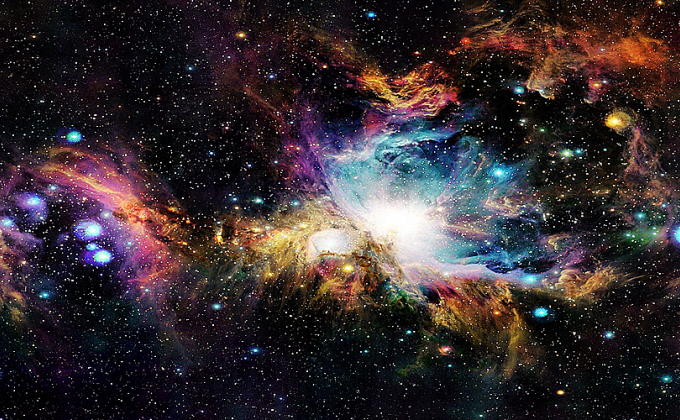
We all know that absolutely everything visible and invisible in the Universe consists of atoms (dark matter does not count, since no one really knows what it consists of). Each such particle contains a nucleus and electrons that revolve around it, being bound to the nucleus due to electromagnetic interaction. However, the nucleus of an atom is so small that if you mentally imagine an atom stretched to the size of a football field, then its nucleus will have the size of only a poppy seed. Why does an atom need so much extra space and is it true that our Universe is 99% empty?
Why can't we walk through walls?
Despite the fact that most of the atom is void, its tiny constituents - electrons - play a very important role in "filling" this void. So, although there are usually very few electrons in an atom, their behavior is akin to a large flock of birds, in which there is no clear boundary during synchronous movement. Everything that we can see during such a movement is a chaotically changing indefinite form. The electrons, constantly changing their position in the atom, move strictly according to the equation, which was first described in the 20th century by the famous scientist Erwin Schrödinger. Yes, yes, the same scientist who loved to put quantum experiments on cats.
Dancing inside the atom, electrons can receive and give up energy coming from outside. That is why light is not able to penetrate the wall, since the electrons of the wall atoms simply take the energy of the light, giving it back after a short period of time. Due to this phenomenon of receiving and transmitting light, the wall next to you seems solid and opaque.
Could the universe be empty?
The universe is famous for objects that can surprise any earthly skeptic with their colossal size. So, the largest object in the studied part of the Universe is recognized as the object called by astronomers the Great Wall Hercules - the Northern Crown. The giant structure stretches as much as 10 billion light-years and is a huge number of galaxies of different shapes and sizes brought together.
Compared to the gigantic structure, our solar system appears to be a small point, lost somewhere far away on the edge of the Milky Way galaxy. Despite this, the gravitational field of our Sun (and not only it, but also other stars in the Universe) is several thousand times larger than its own size. Thanks to this wise setup, planets can revolve around the orbits of their stars without fear of flying away somewhere far into deep space.
A similar situation occurs inside the atom. The ratio of the sizes of electrons, the atomic nucleus and the distances between them is extremely similar to the ratio of the sizes of cosmic bodies and their distances in the macrocosm. In other words, the huge distances inside the atom can shed light on the question of the possible emptiness of the universe.
If this is so, then the Universe is really 99% empty, while 1% of all matter visible to the eye creates the world around us. Despite this incredible fact, all this huge "nothing" contains many invisible and yet unexplored forces that we may one day be able to harness.
